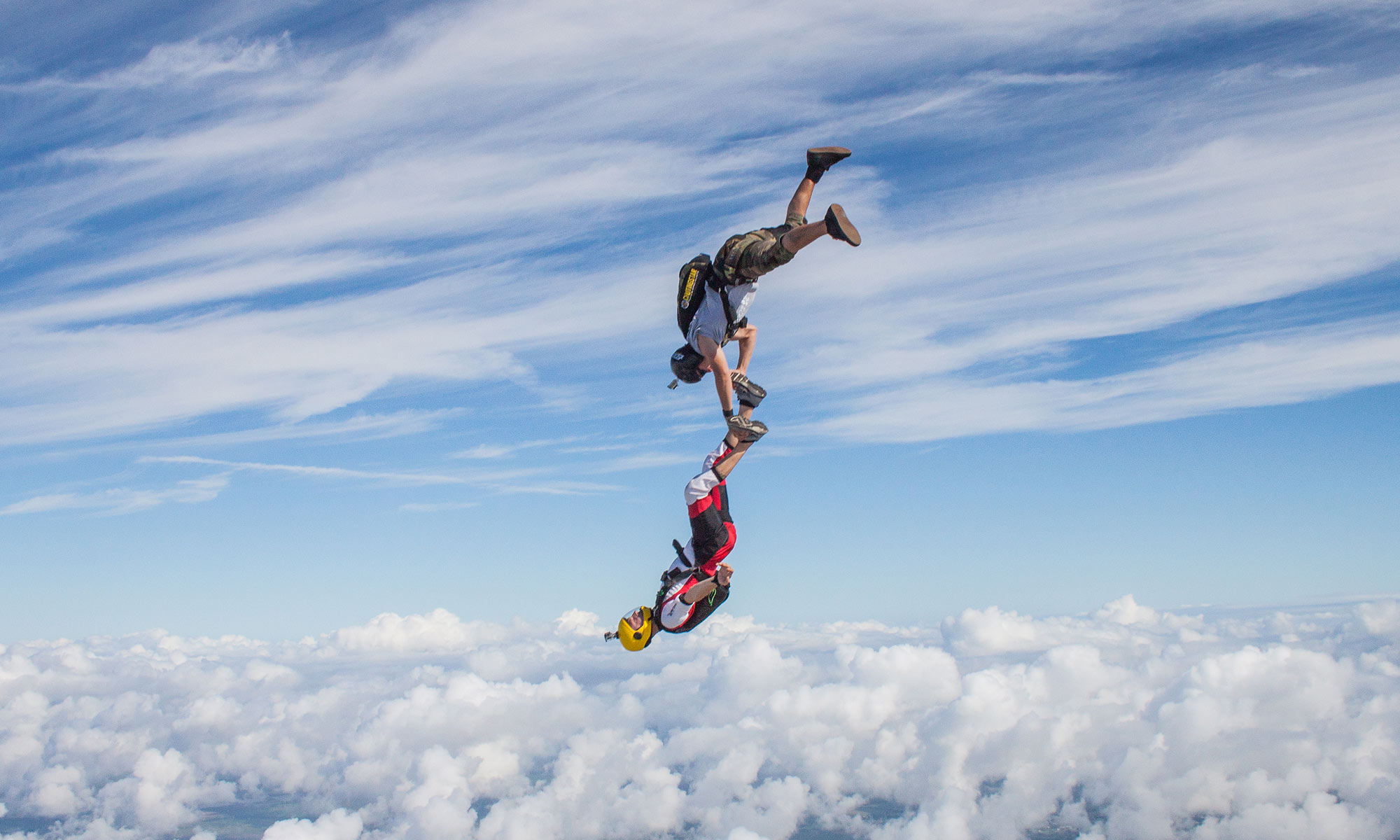Ask any group of non-skydivers what they think would be the scariest part of skydiving, and at least a few will answer, “The landing.” Ask a group of skydiving students, or even experienced jumpers, and you’ll get the same answer from a few of them.
We have the guts to throw ourselves out of airplanes in flight, yet we’re sometimes scared of piloting the assembly of nylon and string that saves our lives. But if a skydiver is scared of the parachute, he/she is often more likely to become injured on landing than a skydiver who flies confidently and safely. So the fear can become a self-fulfilling prophecy–but no one wants that! Let’s look at why some skydivers fear their parachutes and how to fix that.
First of all, fear is often caused by the unknown. No one grew up flying parachutes from childhood, so as adults learning to skydive this is a skill that we don’t know yet. It is related to the skills required to pilot an aircraft or even a car, but not quite the same, hence the potential fear.
Another potential source of fear is loss of control–and we often feel out of control on our first few skydives even if we’re not, just because everything is so new. After all, you can’t get off this ride until you reach the ground!
Put together fear and perceived loss of control, and you sometimes see skydivers that seem scared to fly their parachutes. They may perform very gradual turns and often hear radio guidance along the lines of, “Pull that toggle down further… keep pulling the toggle down to your chest… there you go.” They may also flare the parachute timidly while landing, resulting in not slowing their descent enough to land smoothly. These skydivers are also the ones that may say things like, “The wind blew me off course” after landing out or far from the target.
Flying a parachute doesn’t have to be scary. Parachutes obey the laws of physics pretty well, so all you need to do is understand the basics of those physics and take charge of the parachute. You are the pilot, so listen to your instructors and fly that thing!
“You need to realize you have control just as you do when you are driving your car,” says instructor Raul Quinones. “Understand that you are the pilot of your own canopy. It will not go where you want it to unless you tell it to. If you want the car to turn, you have to turn the wheel. It’s the same as with your parachute–make the correction you want with your toggles (or risers once you have learned how). If the air is turbulent or bumpy, just relax and fly the canopy. Feel the canopy and where it is in relation to your body, and keep it where it’s supposed to be on landing–directly over your head.”
Raul describes the following common mistakes he often sees students and less experienced canopy pilots make:
- Reaching out or down on landing with one hand or foot (often an unconscious intent to “break your fall,” especially if you feel off balance). This causes a diving turn. Instead, focus on keeping the parachute directly overhead and flying it so that you will slow the parachute and touch the ground with both feet at the same time. The parachute is your “safety net,” not the ground!
- Flaring unevenly (one hand higher than the other): Same result as above, and same correction.
- Landing downwind of the target. “Hold upwind, not downwind,” says Raul. “Select a holding area location where the wind will help you get home, not keep you from it. Stay in that area until you have permission to leave it, which is at 900 ft. Also, learn how varying winds affect where your canopy can fly over the ground and use the winds rather than fighting them. Fly the same pattern, but move your pattern’s turn points over the ground—further upwind in higher winds.”
- Not thinking about your landing just as much as your freefall and canopy pattern. “Often people have a lot of adrenaline and just want to land, without thinking about HOW to land properly,” says Raul. “Keep focusing on your landing technique until you have landed safely and picked up the canopy.”
“Be positive and take control!” urges Raul. “Don’t stop thinking until you’ve landed.”

